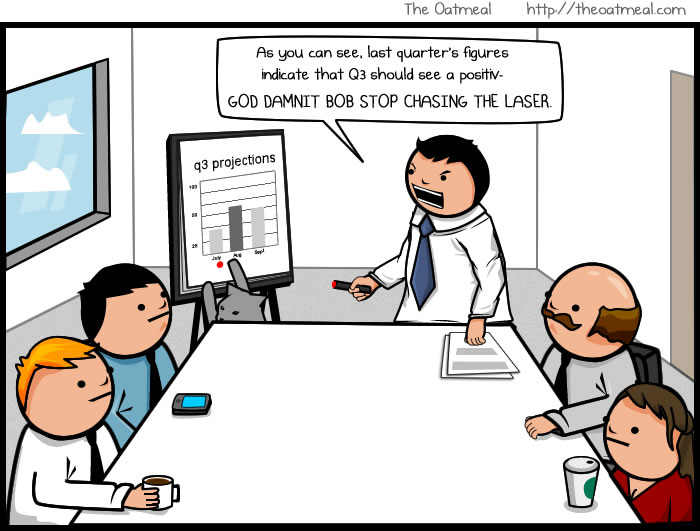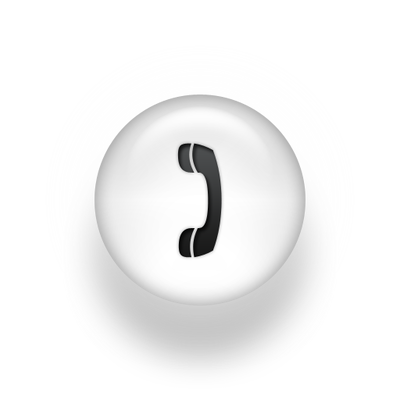
What’s worse than having to attend a bunch of meetings? Having to attend a bunch of bad meetings. I’ve attended a ton of meetings – some of them were super productive, but many of them were a giant waste of time. The fact is that nobody has time to waste and given that time is such a precious commodity, there is tremendous pressure to make each gathering meaningful.
You can always resort to bribing meeting attendees with food (see Philadephia Cream Cheese Commercial) or other inducements to get them racing through the door, but once they are there, they need a solid reason to stay. Food only takes so long to eat and doesn’t work effectively for remote teams and conference calls. So here are five important tips to ensure you lead an awesomely productive meeting every time you gather the troops.
STEP #1: Know your purpose
Understand what you want to get out of the meeting as well as what your attendees want from the meeting.
- If it’s a project kick-off, you will need outline goals, tasks and roles.
- If it’s brainstorming meeting, then you’ll want to leave with ideas and attendees will want to feel like they provided meaningful contributions.
- If it’s a board meeting, you’ll want to recap important events since your last meeting, discuss future strategies and answer questions.
Understanding intent and impact is the first step in leading a successful meeting.
STEP #2: Write an agenda
Your agenda will serve as the cornerstone for meeting management and serve as your silent but forceful timekeeper. Outline the topics to be discussed and the amount of time required for discussion. Be realistic about time. Hot topics require more discussion time as opposed to quick updates.
- If you control all of the content, then you can do this rather easily.
- If you have “guest speakers,” preview the content with the person ahead of time so you can effectively judge the required amount of time needed for the discussion.
- If you can’t reach that person, you’ll have to guestimate.
STEP #3: Send the agenda in advance
Don’t wait until the meeting or right before to send the agenda to the attendees. It makes it look like you prepped right before the meeting, but more importantly, you want your attendees to come prepared. If they know the subject matter ahead of time, they can review their notes or create a presentation that maps to the amount of time allotted to the discussion on your agenda. If you have a change, just send an update.
To prevent the meeting from going into overtime, avoid including topics that can be communicated via email. Float those items at least a week in advance. If the subject becomes quite hairy over email, you can simply add it to the agenda.
Lastly, make sure you include location and conference call information on your agenda.
STEP #4: Stick to the agenda
Arrive a few minutes early and start your meeting no more than two minutes after your scheduled start time. Don’t wait for people who arrive, and don’t recap what was already discussed when they arrive. Latecomers should not be rewarded and it's extremely annoying for those who made the effort to show up on time. If the latecomer doesn't understand what's going on, they will either identify themselves by saying something like, “I may have missed this because I was late, but…” or they will stay silent until they are able to catch up. Either way, they will make a stronger effort to show up on time in the future.
Conversely, if you say the meeting ends at 4:00 pm, end it on time. People make plans based on your start and end times. They may have scheduled another meeting, be under deadline or need to meet a family commitment. Main point - respect the calendar!
Also note that people start to lose focus about five to seven minutes prior to the meeting end time. Therefore, plan to end the meeting a few minutes early before their ADHD kicks in. Also, every minute you keep them after the scheduled end time, the less receptive they will be to the content of your meeting. Plus, it’s easier to manage talkative attendees and latecomers when you are a stickler about the agenda.
STEP #5: Recap the meeting
Call out the main points and action items at the close of the meeting and in written form thereafter. You want to be sure everyone understands their roles and next steps before they leave the room. As said above, plan to end the meeting a few minutes early, which includes the recap. This provides attendees the opportunity to ask questions about next steps or specific to their role, and get to work quickly.
Keep in mind that your meeting Q&A can quickly derail you on time. Therefore, focus on broader questions that affect the whole team first and then talk offline about questions that require any degree of specificity to a task or role. And by confirming it all in writing, you can quickly clear up any confusion or misinformation and hold people accountable for their tasks.
Bonus tip
If you meet with people that don’t use some sort of calendaring tool, then send a reminder the day of the meeting with the time, location and agenda. A little annoying, but it helps ensure attendance.
While your meeting content may be important, the way in which you deliver it is even more critical if you want to your meeting attendees to be receptive to your message. By following these five steps for business meeting management, everyone will respect and appreciate your diligence, and hopefully fall in line accordingly. No bagels required!
Want to meet with me? I run a killer meeting! Contact me for a free marketing consultation today.




